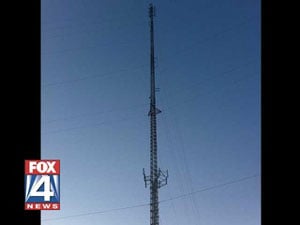 Princeton Township, NJ-The sad news of a rescue squad member losing his life in Hurricane Irene reminds us of the courage it takes to serve others, and the dangers that are faced in the line of duty. A Princeton First Aid and Rescue squad member who was swept away in swift moving flood waters while attempting to search a submerged car during Hurricane Irene has died from his injuries, police said this morning.
Princeton Township, NJ-The sad news of a rescue squad member losing his life in Hurricane Irene reminds us of the courage it takes to serve others, and the dangers that are faced in the line of duty. A Princeton First Aid and Rescue squad member who was swept away in swift moving flood waters while attempting to search a submerged car during Hurricane Irene has died from his injuries, police said this morning.
Michael Kenwood, 39, had been hospitalized since he was pulled from the water early Sunday with undisclosed injuries. He is the fifth person to have been killed by the storm in New Jersey and the first reported death in Mercer County.
Kenwood was tied to another rescuer and entered the water, but they quickly realized the current was too strong and attempted to turn back when one of the men fell, Paulson said. The two men were tied to a line being tended by other rescue squad members on the shore, but they came free from the line.
Kenwood was swept away and later pulled from the water by a first aid backup team, Paulson said.
Reported by NJ.com

 Here’s a follow up to a Confined Space Fatality story we published earlier this year. One of the injured persons (a “would be” rescuer and co-worker of the initial victim) remains hospitalized since January. According to a Cal/OSHA Chief, “it is unfortunately common for other employees to be injured or killed while attempting impromptu rescue of the initial victim.” In fact, NIOSH states that prior to enactment of the permit-required confined space regulation, 60% of all fatalities in confined space incidents where multiple fatalities occurred were “would-be” rescuers.
Here’s a follow up to a Confined Space Fatality story we published earlier this year. One of the injured persons (a “would be” rescuer and co-worker of the initial victim) remains hospitalized since January. According to a Cal/OSHA Chief, “it is unfortunately common for other employees to be injured or killed while attempting impromptu rescue of the initial victim.” In fact, NIOSH states that prior to enactment of the permit-required confined space regulation, 60% of all fatalities in confined space incidents where multiple fatalities occurred were “would-be” rescuers. The Chilean and Pike River mine disasters in 2010 revealed the dangers and difficulties faced in extracting those trapped beneath the earth. The earthquakes and hurricanes on the east coast of the US this month are an indication that extrication training and resources have never been needed more. Structural collapse, trench rescue and extrication from confined spaces (including mine incidents) have a common element. Many have unknown dangers: poisonous gases, flooded tunnels, explosive vapors, unstable structures… all obstacles that can significantly slow rescue operations.
The Chilean and Pike River mine disasters in 2010 revealed the dangers and difficulties faced in extracting those trapped beneath the earth. The earthquakes and hurricanes on the east coast of the US this month are an indication that extrication training and resources have never been needed more. Structural collapse, trench rescue and extrication from confined spaces (including mine incidents) have a common element. Many have unknown dangers: poisonous gases, flooded tunnels, explosive vapors, unstable structures… all obstacles that can significantly slow rescue operations. The Burleson (TX) Fire Department recently got a chance to put their skills (and stamina)to the test when they rescued a worker from atop a 750-ft cell tower. It sounds like they did a great job, and serves as an important reminder of the challenges these towers can pose to local emergency responders. Preplanning for this type of incident is critical – especially when it occurs in the middle of summer! Temperatures were 100+ degrees at the time of the dramatic rescue.
The Burleson (TX) Fire Department recently got a chance to put their skills (and stamina)to the test when they rescued a worker from atop a 750-ft cell tower. It sounds like they did a great job, and serves as an important reminder of the challenges these towers can pose to local emergency responders. Preplanning for this type of incident is critical – especially when it occurs in the middle of summer! Temperatures were 100+ degrees at the time of the dramatic rescue.


